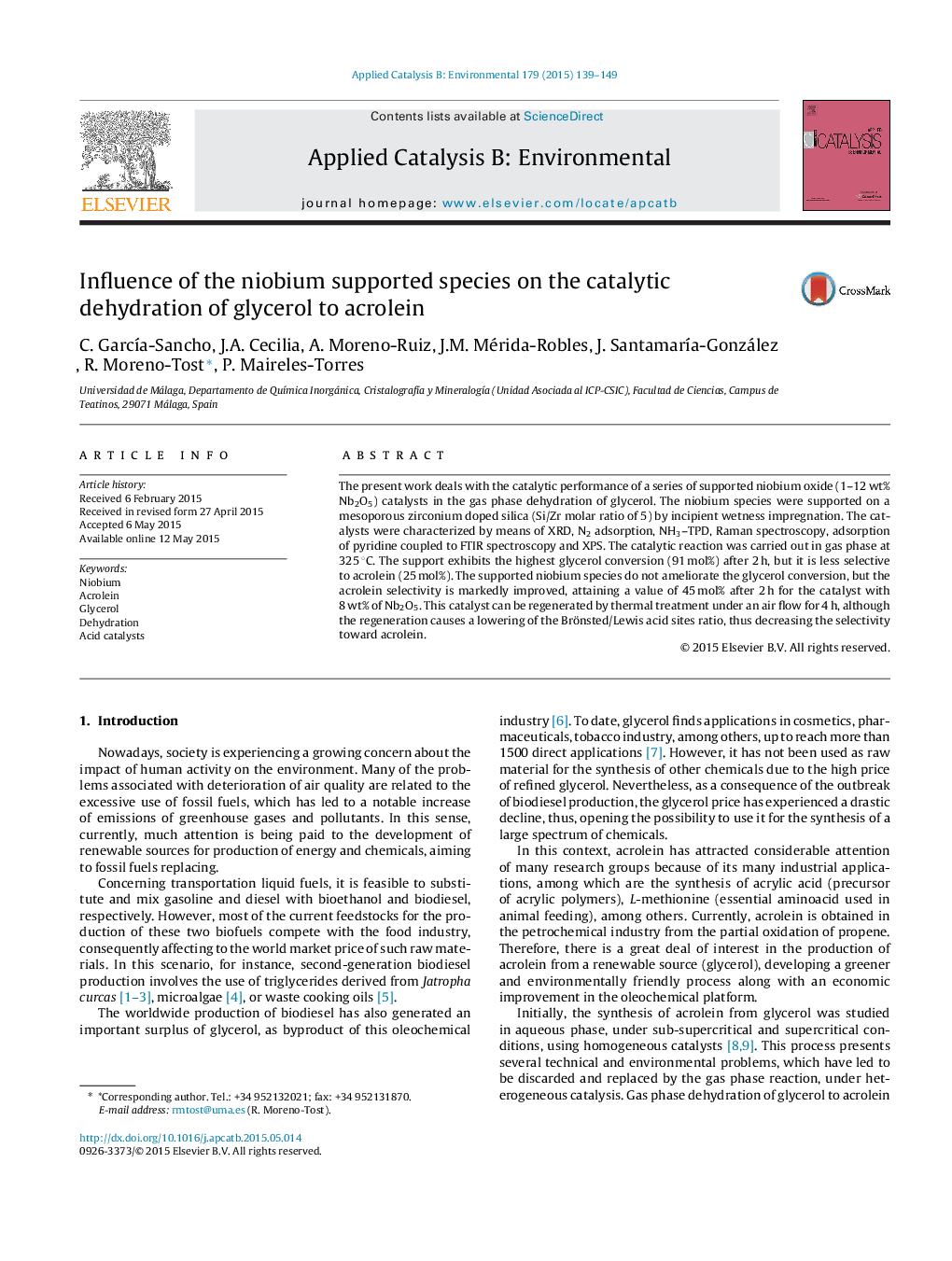| Article ID | Journal | Published Year | Pages | File Type |
|---|---|---|---|---|
| 45443 | Applied Catalysis B: Environmental | 2015 | 11 Pages |
•Supported niobium oxide catalysts are active in glycerol dehydration to acrolein.•Acrolein selectivity is related to the existence of Brönsted acid sites.•Brönsted acid sites are generated in presence of water vapor.•Lewis acid sites are more stable but less selectivity.•Brönsted acid sites are not regenerated by thermal treatment at 550 °C.
The present work deals with the catalytic performance of a series of supported niobium oxide (1–12 wt% Nb2O5) catalysts in the gas phase dehydration of glycerol. The niobium species were supported on a mesoporous zirconium doped silica (Si/Zr molar ratio of 5) by incipient wetness impregnation. The catalysts were characterized by means of XRD, N2 adsorption, NH3–TPD, Raman spectroscopy, adsorption of pyridine coupled to FTIR spectroscopy and XPS. The catalytic reaction was carried out in gas phase at 325 °C. The support exhibits the highest glycerol conversion (91 mol%) after 2 h, but it is less selective to acrolein (25 mol%). The supported niobium species do not ameliorate the glycerol conversion, but the acrolein selectivity is markedly improved, attaining a value of 45 mol% after 2 h for the catalyst with 8 wt% of Nb2O5. This catalyst can be regenerated by thermal treatment under an air flow for 4 h, although the regeneration causes a lowering of the Brönsted/Lewis acid sites ratio, thus decreasing the selectivity toward acrolein.
Graphical abstractFigure optionsDownload full-size imageDownload as PowerPoint slide
